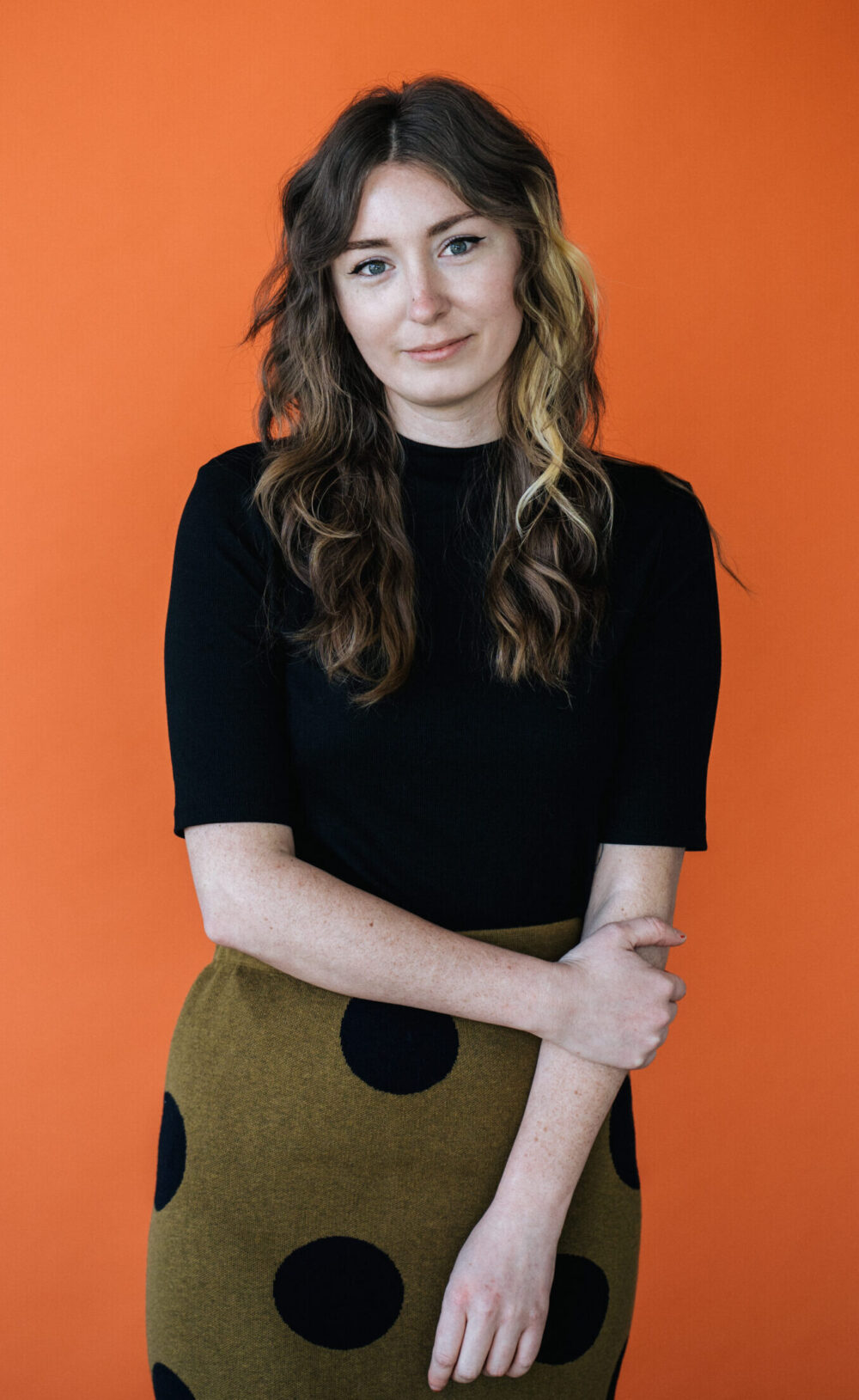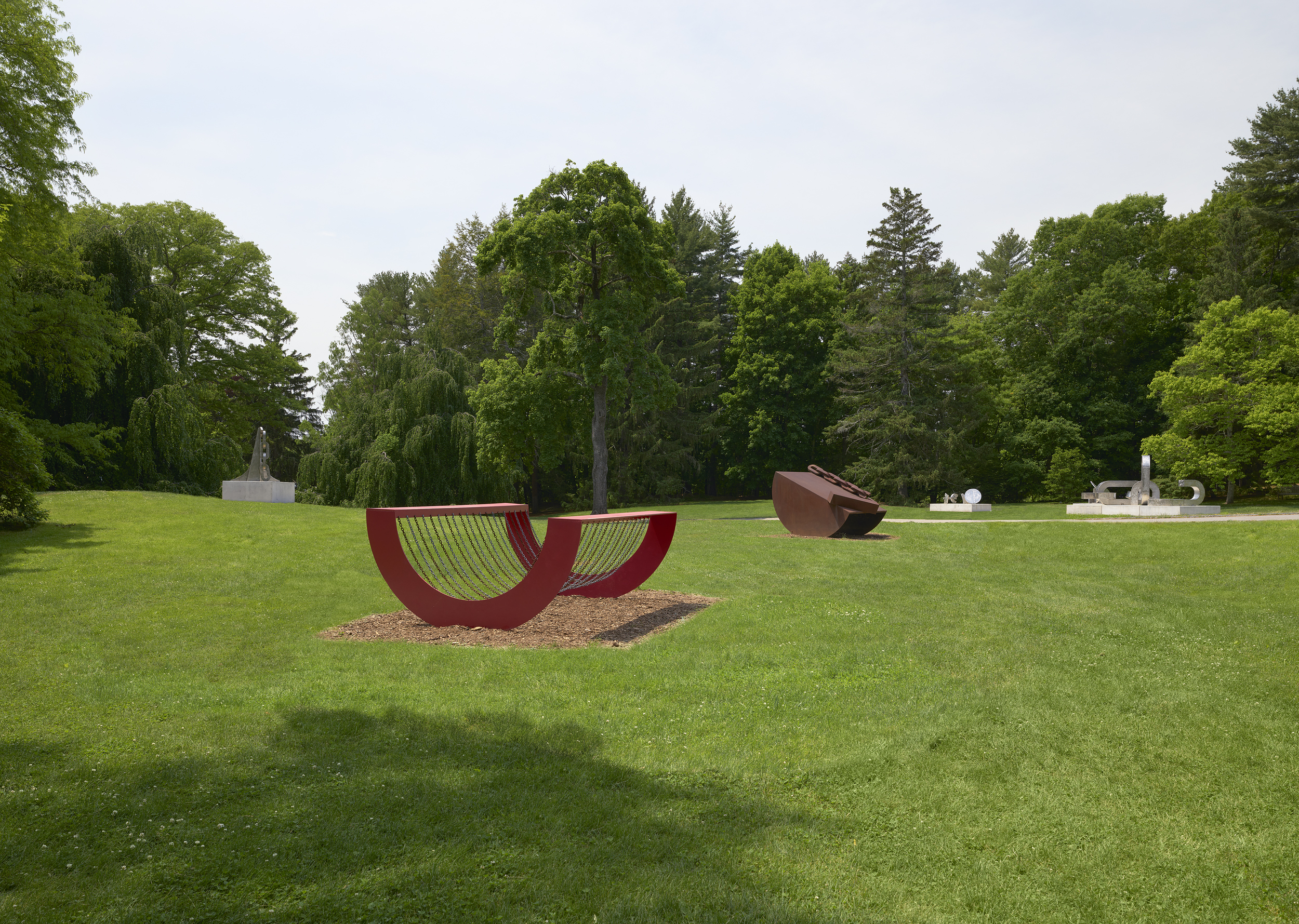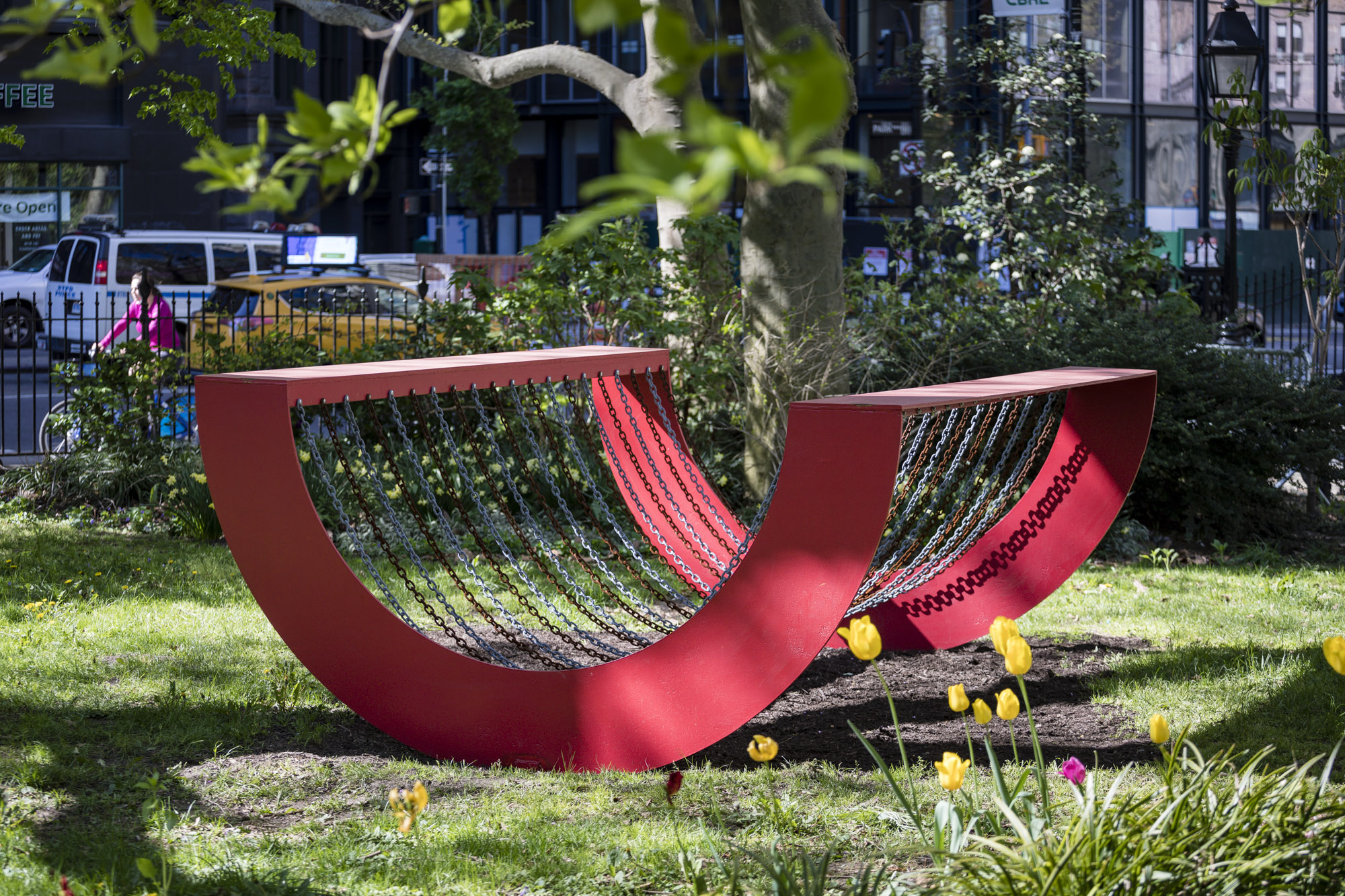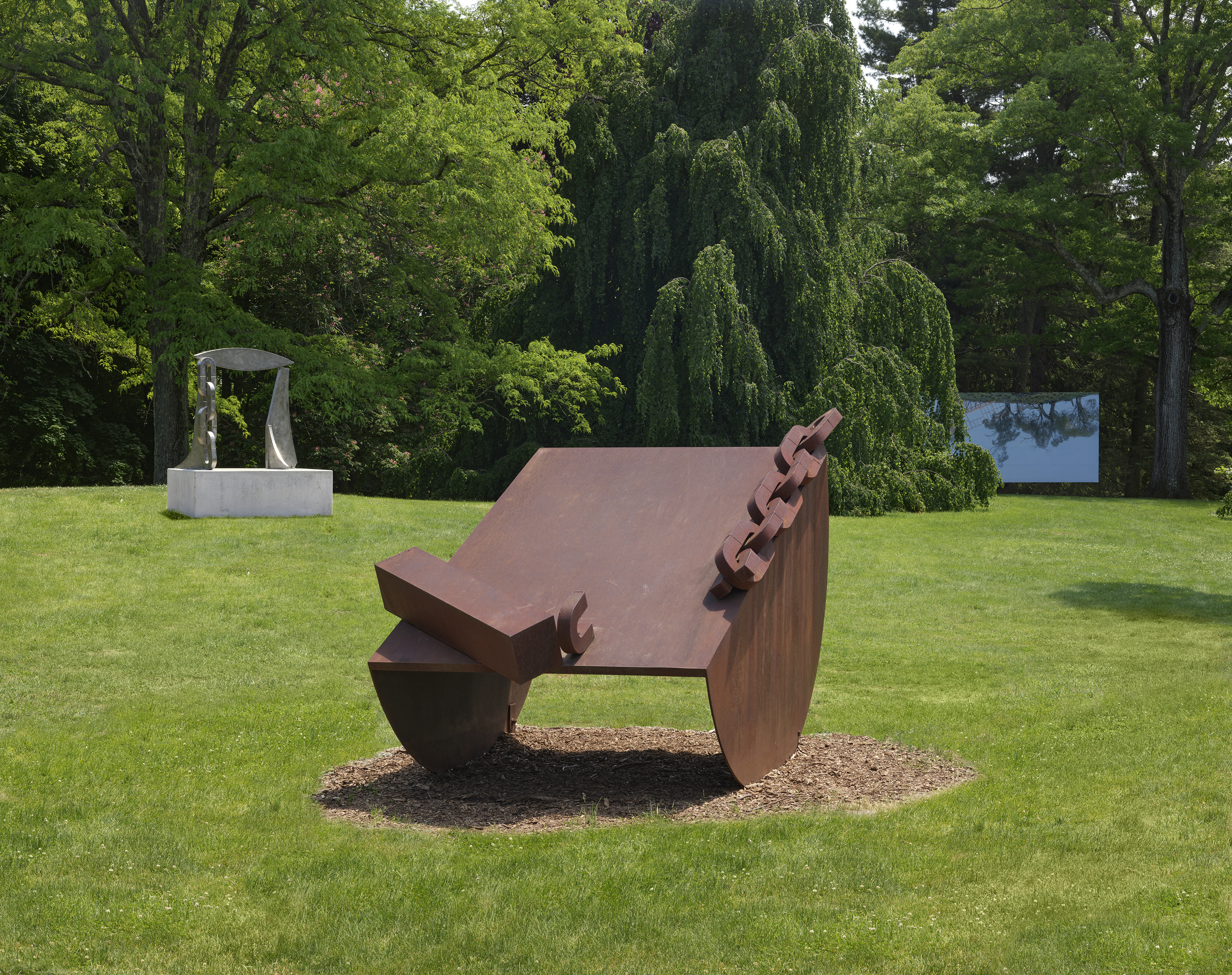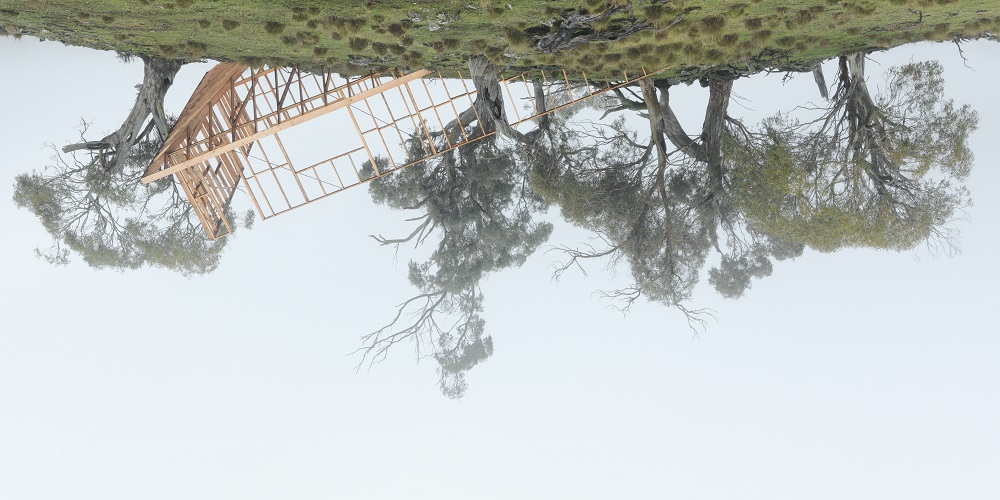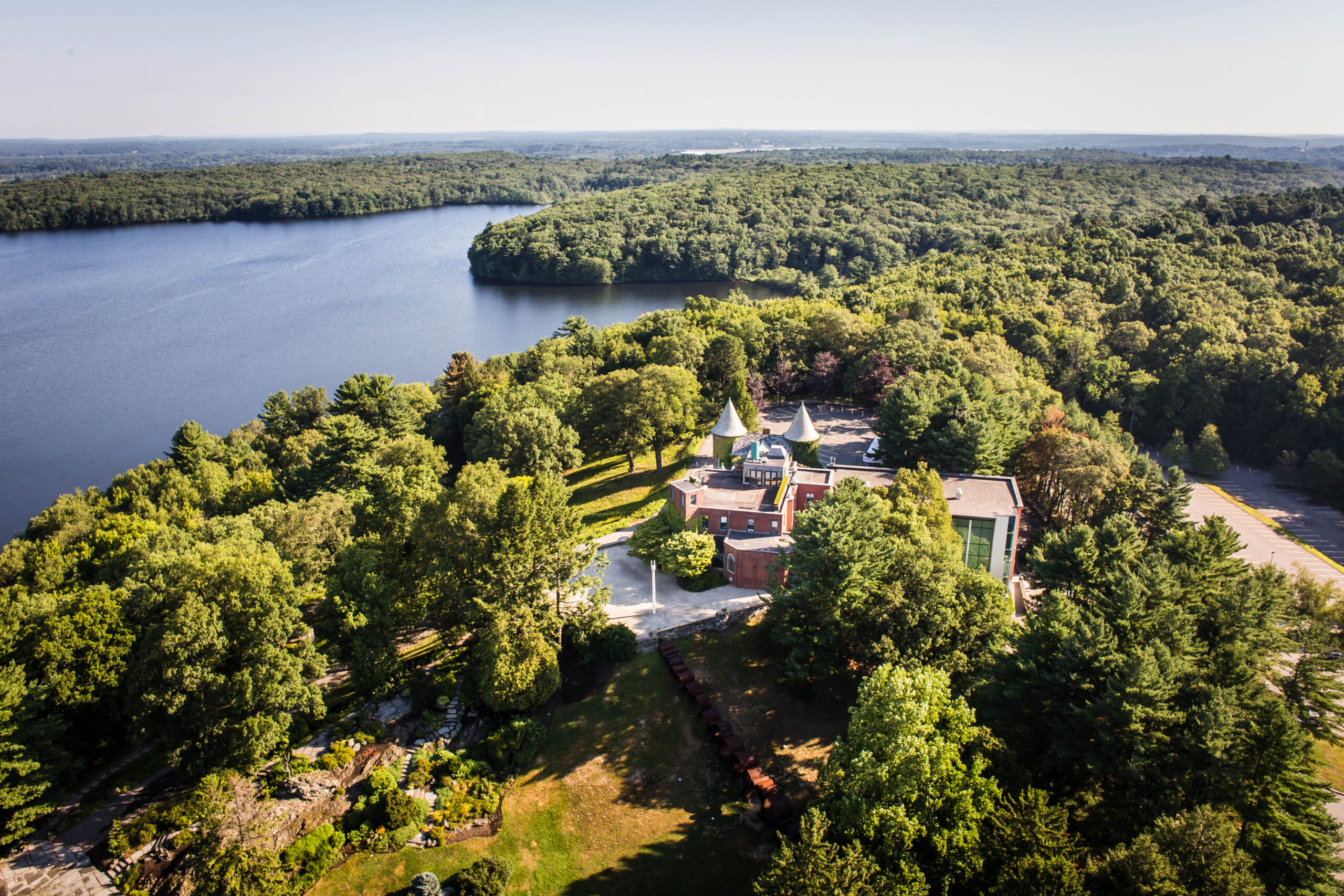Since 1950, the halls and hills of deCordova Sculpture Park and Museum in Lincoln have been home to a diverse and compelling array of contemporary art. From the time of The Trustees integration with deCordova in 2019, our work protecting and celebrating this 30-acre park and museum has been possible thanks to generous Founders Circle members like you.
Summertime at deCordova is brimming with exciting events and programming for audiences of all ages, all season long. Don’t miss the beloved summer performance series; three family picnic nights; a live performance by New England Triennial artist Heather Lyon, The Weight of Water, on July 16; and much more.
In addition to these extraordinary events, we are proud to celebrate the recent opening of Melvin Edwards: Brighter Days, deCordova’s first major outdoor exhibition in several years, which showcases six of the acclaimed artist’s large-scale sculptures. Gleaming and strong amidst the lush, green lawns of the Sculpture Park, these works offer a focused look at Edwards’ artistic accomplishments from the past 50 years and invite deep reflection on his abstract examinations of connection, race, labor, and the African Diaspora. The exhibition was first shown in New York and has been organized for display at deCordova by curatorial fellow Haley Clouser.
Read on for a Q&A with Haley, where she provides a behind-the-scenes glimpse into a day in the life of a museum curator as well as exciting updates on upcoming exhibitions at deCordova.
Thank you for your generous support of deCordova and The Trustees as a member of the Founders Circle!
What brought you to deCordova and The Trustees?
I received my master’s degree in art history with a concentration in museum studies at Virginia Commonwealth University in 2019 and subsequently interned and became the Samuel H. Kress Interpretive Fellow at the Virginia Museum of Fine Arts (VMFA), which is where I got my first taste of curatorial work.
After some time they hired me as an exhibitions research assistant and I worked on an exhibition called The Dirty South: Contemporary Art, Material Culture, and the Sonic Impulse, where I assisted with coordinating installations around the building, as well as researching and writing sections of the exhibition catalog.
After that, I was independently curating outdoor and indoor exhibitions and writing about contemporary art for publications like Burnaway, but I wanted a job where I had more of a say in what was happening with a particular show, which is when I found this fantastic opportunity at deCordova.
My fellowship is a two-year position, which I started in October 2021. It’s been an incredible opportunity to work on group exhibitions, assist deCordova Senior Curator Sarah Montross with larger exhibitions, and curate my own permanent collection exhibition.
Can you describe a typical day for a curatorial fellow at deCordova?
Every day you have a different task to do that you probably will never do again because every exhibition is unique. Earlier today, I was working with our graphic designer to finalize the layout for an essay I wrote and liaising between the graphic designer and the print company to make sure everything is printed correctly. The brochure is a supplement to our PLATFORM series – this iteration is for Rosemary Laing’s exhibition, Prowse.
Today, I also spoke with Sarah about the upcoming show, New Formations. We discussed how we will activate and engage audiences around the show’s theme: bodies in performance, movement, and procession.
As a curator, you’re working with artists to apply your research and design skills to an exhibition. There’s a lot to do every day, coordinating with people inside and outside of the museum.

